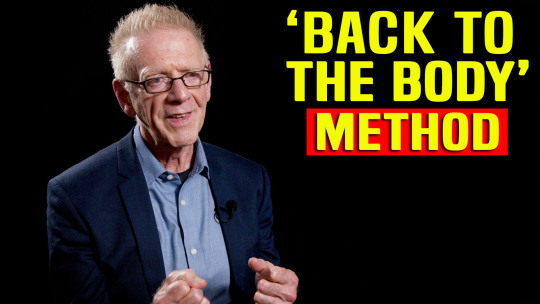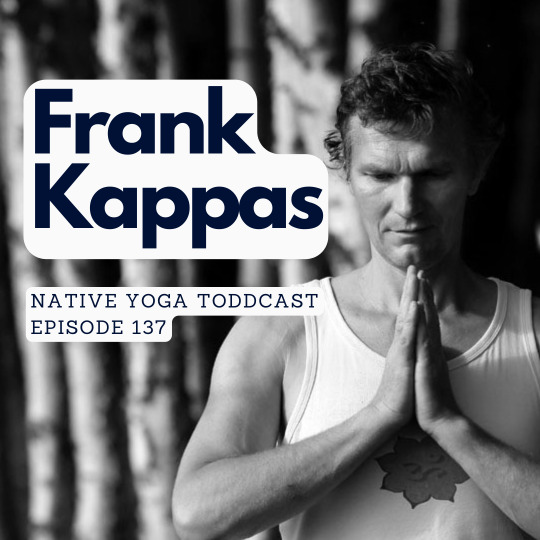#Alexander Technique
Text









#rex orange county#rex orange county icons#icons rex orange county#rex icons#icons rex#boys#boys icons#male icon#males icons#twitter stuff#male icons#twitter icons#icons#rex5#the table#the shade#who cares#apricot princess#pony#ponyboy#indie#indie boys#alexander technique
11 notes
·
View notes
Text
This one is probably as goofy as we get 👆 — we’ve spent six years talking about Romance Science, and now class is in session! We’re talking biology, human physiology, astronomy, neurology, urology, gynecology, obstetrics and dermatology. Basically, we’ve studied this enough to hold multiple MDs & PhDs. If we’re ever on a plane and someone needs a doctor, we’re volunteering. Love doctors count, right?
We also talked 👇 about wondrous Alexander Technique practitioner Christopher Reeve.
youtube
(Thanks to 1001 Dark Knights and Pippa Grant for sponsoring this week's episode.)
#christopher reeve#superman#alexander technique#romance books#romance novels#romance science#Youtube
8 notes
·
View notes
Text

Horses feel our thoughts. With hands as light as a dandelion seed we can direct our minds energy from our free necks and poised backs through our seat and hands to the horses mind, soul and spirit carrying us both through an ever expanding potential space. It’s called lightness and it takes practice as we live in habits of thinking and moving that make our muscles dense and the flow of pure potential thought gets restricted. Each directed thought is life in motion, lengthening our muscles and allowing the horse to lengthen and lighten too, seeding the energy available to us…
(Kirsten Harris Art)
5 notes
·
View notes
Text

5 Steps To Script Analysis For Actors - Jean-Louis Rodrigue
Watch the video interview on Youtube here.
#writing#writers on tumblr#screenwriting#filmmakers on tumblr#cinema#filmmaking#movies#screenwriters on tumblr#script#film#character concept#character backstory#character background#actors#popee the performer#performance#performing art#j edgar hoover#i tonya#directing#behind the scenes#directors#theater tech#acting#alexander technique#movement#theatre#theater#musical theatre#musical theater
4 notes
·
View notes
Text
Magic in your hands. Here’s a reality check. Equipment required, a standing human being, you, and an object, preferably a spheroid atop a fixed surface.Place your hands on the sphere or near sphere, a human head, or a substantial ball, plastic, mineral, or quartz, larger if possible than a softball, but that might do. Bring your soft hands to either side of the head or object and embrace the object, connect with its surface, it’s contours and free your wrist. Now rotate your hands, the fingers coming back to you the thumb moving away, a turning. (If you we’re performing the turning in a weightless environment your feet, legs, and torso would begin to rotate in the direction of your turning. Got it?) Now here in Earth’s gravity insist on feeling the same impetus of rotation in your feet and ankles. If you don’t feel it, do less. This freedom of wrists and ankles will manifest in your breathing, your solar plexus, your neck, the whole of you. What the hell is this you may wonder. It’s the wonder of the universe, our “real world waviness.” It’s the Alexander Technique if you want to call it that. You may, like me, like many others, recall it at will. It’s innate, a gift of the universe.
[Alan Bowers]
#quotes#Alan Bowers#your hands#Body Alive#structural integration atlanta#technique#Alexander Technique
3 notes
·
View notes
Text
Neil is Interviewed about Shamanism and the Alexander Technique

Neil and Lucia talk about a variety of topics including the Alexander Technique and Shamanism.
Lucia Matuonto is the host of UNCUT with Lucia by WorldAuthors and the host of her podcast The Relatable Voice.
Read more About:- Alexander Technique
2 notes
·
View notes
Text
Doing Nothing About It
There are so many great sayings in the English language about putting up with a state of affairs, aren’t there?
‘Grin and bear it’, ‘Put a brave face on it’, ‘Man up’, ‘Pull yourself together’, ‘No gain without pain’, ‘Make the best of it’, ‘It could be worse’, ‘Just get on with it’, ‘Bite the bullet’, ‘Stiff upper lip’, ‘Make the best of a bad situation’… and there are undoubtedly many more.
I…

View On WordPress
#acupuncture#alexander technique#chi kung#cranial#discomfort#james drewe#osteopath#osteopathy#pain#posture#qigong#tai chi#taiji#taijiquan
0 notes
Text
Alexander Technique is so strangely taught. Every book is like reading someone's book of shadows that they don't know is their book of shadows. Like 1/3 of it will be a straight-forward, desert-dry tension-reduction-by-attention-and-habit-modification manual, 1/3 will be a grift-flavoured advert for obviously endless expensive tutelage, and the final 1/3 is a prescriptivist cult recruitment pamphlet for the author's specific denomination, and their rituals and pseudo-scientific rationalisations
#acting#alexander technique#pure A.T. is prob pretty good method if you have a fairly healthy musculoskeletal system#alas i don't but I've got a lot of mileage out of using it along-side other tension reduction modalities like yoga and myofascial release#call me paranoid but the weird pseudo-science stuff wrapped up in this technique is super sus and freaks me out#post-pandemic me does not trust magical thinking about pretty self-evident things#the whole technique boils down to paying attention to how tension jacks up your kinesthetics and creates a mental/emotional feedback loop#and how to consciously stopping doing those things without inadvertently adding more tension to break the loop#rocket surgery it ain't
0 notes
Text
Alexander Technique
Alexander Technique is a holistic approach to improving posture, movement, and overall well-being. Developed by Frederick Matthias Alexander, an Australian actor, in the late 19th century, this method has gained recognition for its effectiveness in promoting physical and mental awareness. By exploring the mind-body connection, the Alexander Technique emphasizes the release of muscular tension and…

View On WordPress
0 notes
Text
Develop positive body language with Alexander Technique

Your body language is what you communicate to others without saying a word. I have a neighbor I sometimes watch from my second-floor window as he leaves my building, and I can tell what kind of mood he’s in as he makes his way down the street — it has often been a not-so-happy look. I can tell by how he carries himself, by the slump in his shoulders, his bowed head, and his shambling gait. I’d been worried about him. He’s a nice guy, and he’s done me a lot of good, and recently, an important favor.
So I wanted to return the favor, and offered him a few Alexander Technique lessons as a thank-you. He didn’t immediately jump at the idea, but some months later stopped by and said, “I think I’m ready, I need to make a change in my life.” That’s all I needed to hear. I had a hunch he might develop positive body language with Alexander Technique.
At our first lesson, he told me his mother had always complained about his posture and told him to pull his shoulders back (he demonstrated, hoisting his chest, and shifting his shoulders into a model of military stiffness). I said that wasn’t really the way to go. We continued to work in our lesson on getting him to release his neck, and with that, to let his spine lengthen, while encouraging his feet to make good contact with the ground (“hold the floor in place,” I told him.)
After multiple times getting in and out of a chair in a new way, and some “letting go” work on the table, he looked at himself in our studio mirror in wonder. His shoulders fell in a beautiful, natural broad arc at the foot of his gently erect neck. His eyes were bright, and his legs and feet met the floor with new energy. “You’re a new man,” I said. He laughed with pleasure and surprise. “It’s like being a baby again, you’re teaching me to sit and stand and walk!” and all that was true. Most importantly, though, I was helping him to become himself unbowed by a lot of unhappy habits he’d gotten used to and that were literally bringing him down — down in space as well as in spirit.
Because now, on top of everything else, my friend was subtly but visibly taller.
I had to warn him, “All this won’t just ‘stay in place’ for long — and I don’t want you to try and ‘hold it in place,’ either. What we’re doing is teaching you to be constantly creating this condition of freedom. It’s a process you are learning that you can use yourself, to recreate yourself.” He walked me to the subway and I asked him whether he’d be able to meet the following week at the same time. “I sure can!” he replied, “I’m excited!” I was too. This is really the fun of teaching. Watching people develop positive body language for expressing freedom and well-being. “Don’t forget,” I told him, “stop every once in a while and ask yourself, am I going up? Or am I coming down.”
The word “up” is the most important word in our new language.
Read more About:- Alexander Technique Lessons
0 notes
Text
Frank Kappas - Embracing Vulnerability and Connection in Yoga
Listen to podcast with Frank Kappas for FREE here
Frank Kappas is an Ashtanga Yoga teacher based in Finland. He has been practicing yoga since 1996 and has studied with renowned teachers such as Petri Räisänen and Lino Miele. Frank is also interested in other modalities such as Vipassana meditation and bodywork, which he incorporates into his teaching and practice.Visit Frank on his…

View On WordPress
#achievements#Alexander Technique#appreciation#art#Ashtanga yoga#Brene Brown#Bryce Allen#communication#community#connection#conversation#donation#East Germany#empathy#family#Finland#flexibility#Frank Kappas#gratitude#growth#humanity#improvement#inspirational speakers#instagram#interview#Klamath Falls#labor of love#massage bodywork#massage therapy#mistakes
0 notes
Text









#rex orange county#rex orange county icons#icons rex orange county#rex icons#icons rex#alexander o'connor#alexander o'connor icons#alex icons#icons#boys#boys icons#male icon#twitter stuff#blue sky#rex5#who cares#apricot princess#pony#ponyboy#male icons#twitter icons#males icons#alexander technique
5 notes
·
View notes
Text
At the gym today, a shirt reads:
“Pain is weakness leaving your body.”
A slightly catchier version of:
“No pain, no gain.”
And honestly…
Fuck both of these.
It’s so fucking important to know how to distinguish between discomfort, fatigue, and pain.
Pain is your body warning you that you are damaging yourself, or close to damaging yourself.
And it is always, ALWAY, better to err on the side of getting “less” of a workout than to flirt with injuring your body.
Be a wuss. Tap out early. Listen to your body.
Don’t damage yourself.
#fitness#health & fitness#injury#health#chronic injury#no pain no gain#Alexander technique#disability
1 note
·
View note
Text
Not sure if there's anything new here - I know that many musicians use eg Alexander technique to mentally reduce strains from playing.
0 notes
Text

Bad Habits That Actors Have And They May Not Realize It - Jean-Louis Rodrigue
Watch the video interview on YouTube here.
#cinema#filmmaking#film#acting#theatre#performers#acting 101#actors life#movement#performing artist#directing actors#set life#musical theatre#theater#actors#film industry#audition#acting for film and television#acting tips#acting life#actors on actors#alexander technique#performance#stage play#acting in a scene
1 note
·
View note
Text
youtube
Alexander technique lesson with Diana Devitt-Dawson
1 note
·
View note